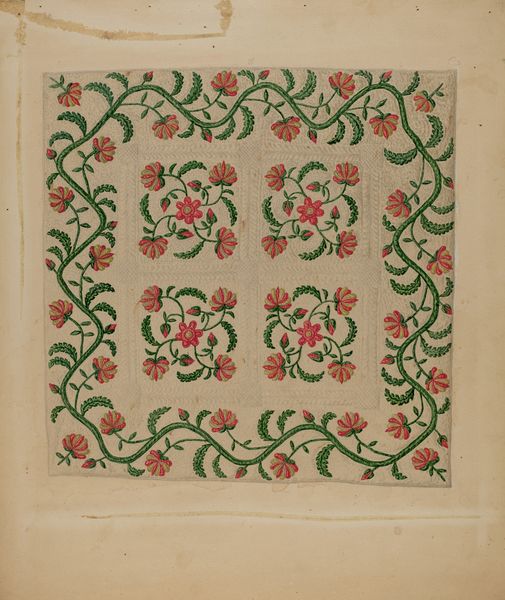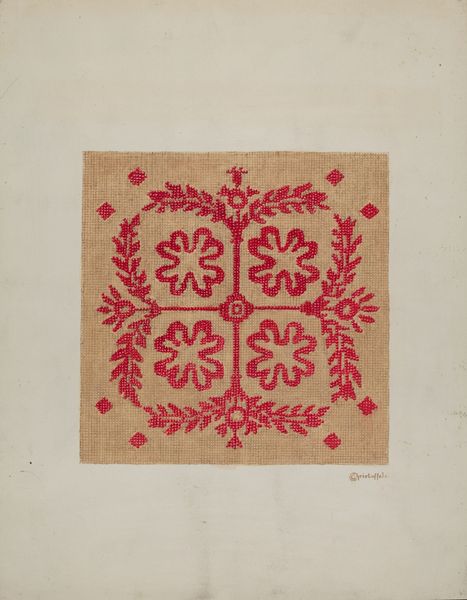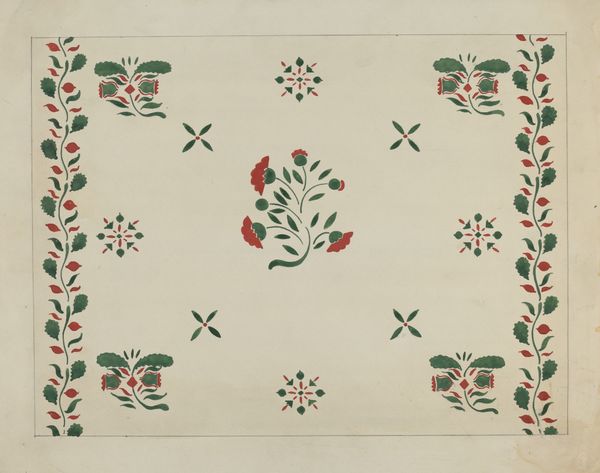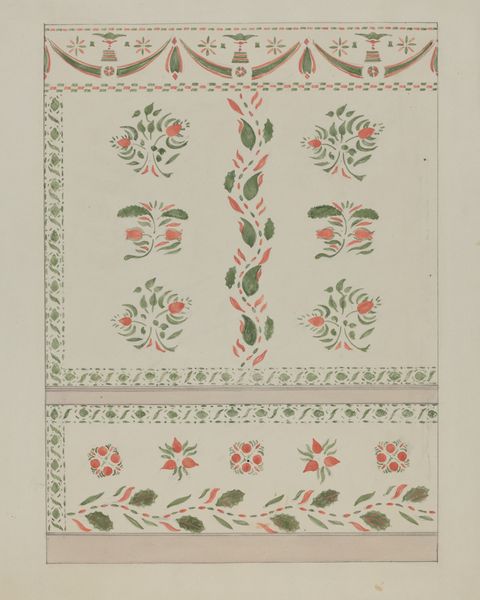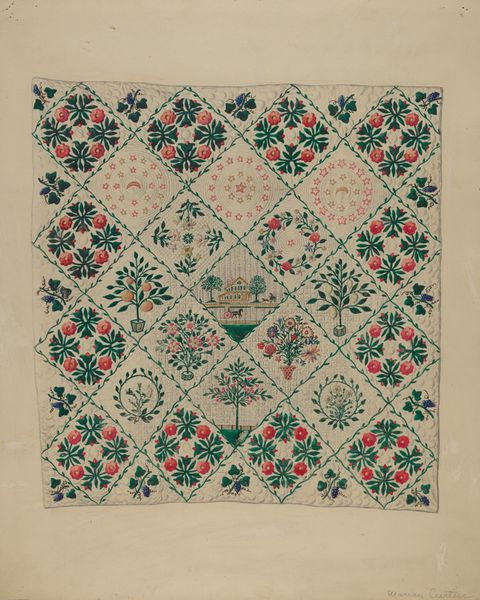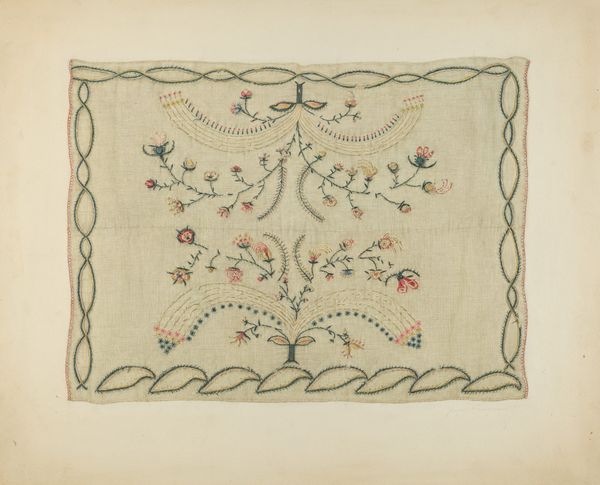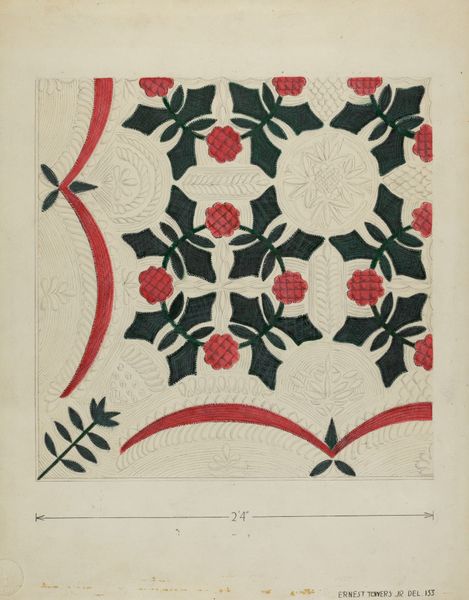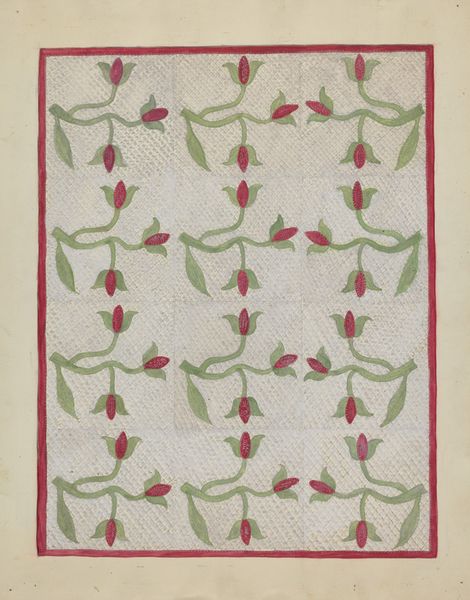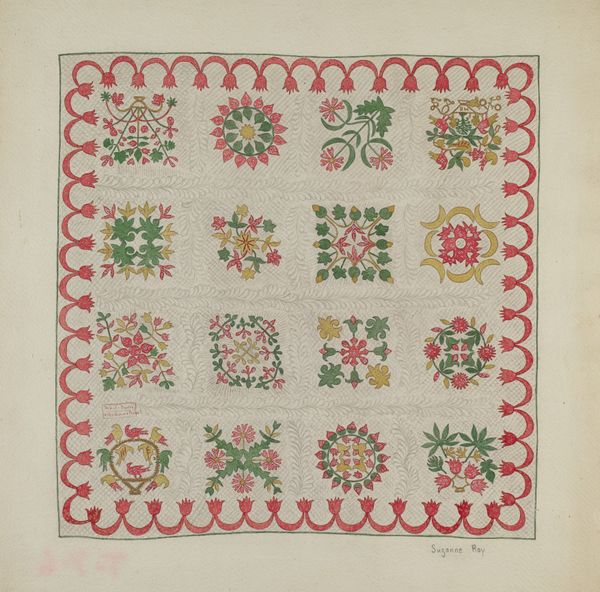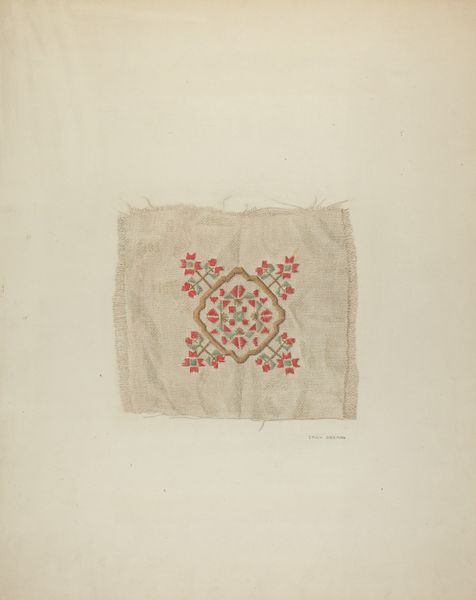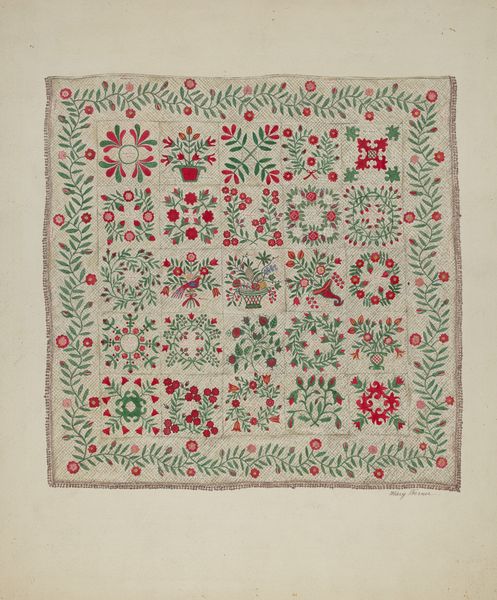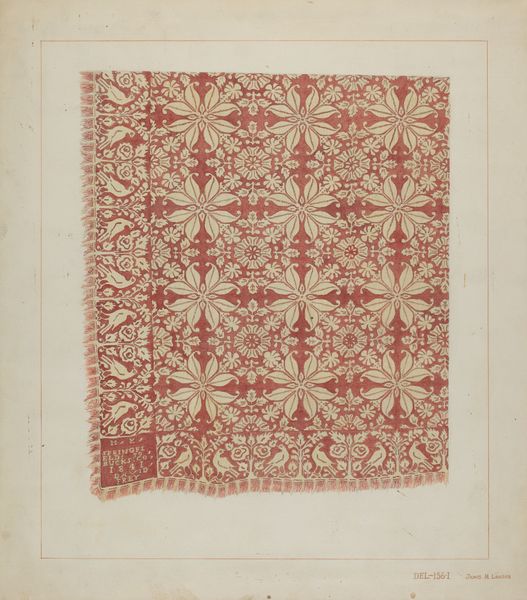
drawing, textile, watercolor
#
drawing
#
naturalistic pattern
#
organic
#
textile
#
watercolor
#
folk-art
#
organic pattern
#
watercolor
Dimensions: overall: 40.7 x 40 cm (16 x 15 3/4 in.) Original IAD Object: 7'4" x7'1"
Copyright: National Gallery of Art: CC0 1.0
Editor: This is “Quilt – Tulip Pattern” from around 1939, created by Fred Hassebrock using watercolor and textile. It gives off a calming and homespun vibe. What aspects of its structure stand out to you? Curator: The interplay of geometric structure and organic form presents itself immediately. Notice the grid underlying the entire composition – it establishes a rigid framework. But then the tulip motifs introduce a softening, organic element that counters this rigidity. Editor: It's interesting how the tulip pattern repeats. What does this repetition signify to you? Curator: The repetition establishes rhythm and balance across the picture plane. The subtle variations in color and the hand-drawn quality of the tulips prevent it from feeling mechanically reproduced, retaining a certain visual interest, you see? Editor: I hadn't noticed the subtle differences in color at first. Do you see anything symbolic in this design? Curator: Symbolism, of course, may be present, yet the impact here seems centered on pure visual relationships. The arrangement and color relationships create a pleasing visual field. Consider, for instance, the balance between positive and negative space; the background isn't merely empty, it is part of the formal arrangement. Editor: That makes me see it differently – more as a structured, almost minimalist composition than folk art. Curator: Exactly. The overall effect is achieved through considered compositional decisions rather than reliance on narrative content. What does this reveal about its aesthetic intentions? Editor: It sounds like understanding the artist's choices in color and pattern gives insight into their compositional method. I appreciate your emphasis on analyzing how it looks, rather than just what it means. Curator: Precisely, engaging in careful observation can uncover profound strategies of pictorial construction.
Comments
No comments
Be the first to comment and join the conversation on the ultimate creative platform.
